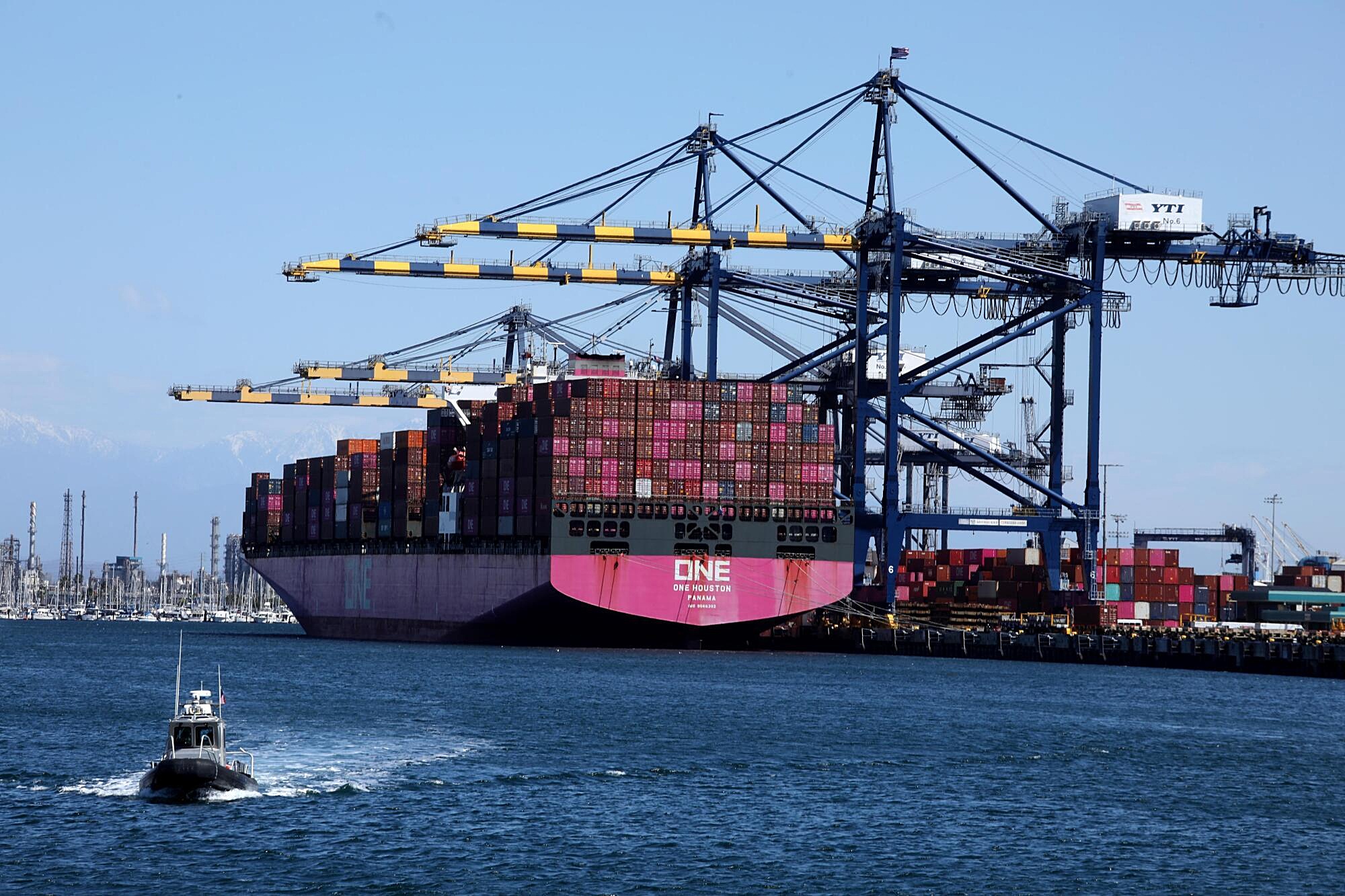A comprehensive congressional investigation has uncovered an alarming revelation: Chinese cargo cranes utilized in the United States are equipped with technology that could potentially serve as a Trojan horse for Beijing’s espionage operations, posing a significant threat to port traffic and even allowing for the suspension of commerce at U.S. seaports.
The concerns emerged earlier this year when congressional and Senate leaders raised questions regarding the utilization of communication equipment discovered on Chinese-manufactured cranes.
The subsequent report provided detailed insights into the escalating threat posed by Chinese-made equipment to the U.S. maritime supply chain and national security, given its potential accessibility to Beijing’s military.
It is important to note that Chinese companies are mandated by the Chinese Communist Party (CCP) to cooperate with state intelligence agencies.
Representatives John Moolenaar (R-Mich.), Mark Green (R-Tenn.), and Carlos Gimenez (R-Fla.) jointly emphasized that by purchasing Chinese equipment for U.S. infrastructure, the United States is jeopardizing its economic security for short-term financial gains.
In their joint statement, they highlighted the fact that the country has inadvertently provided the CCP with the means to monitor the movement of goods within its ports and potentially disrupt port activities on a whim. They further emphasized the risk of China utilizing this power to influence global military and commercial activities, particularly in the midst of escalating tensions in the Indo-Pacific region.
The report underscores the concerning level of dependence of the U.S. maritime sector on equipment and technology manufactured in China, including ship-to-shore cranes and container handling equipment.
Shanghai Zhenhua Heavy Industry Co. (ZPMC), controlled and financially supported by the Chinese government, has emerged as the dominant player in the global maritime equipment and technology market, further intensifying the vulnerability of U.S. ports.
According to industry expert Mills, the container cranes manufactured by ZPMC are not mere cranes; they are IP endpoints integrated into a comprehensive intelligence collection system.
The report also highlights the deliberate efforts of Chinese state-owned enterprises, ZPMC included, to enhance their influence by underpricing their offerings, making them more appealing than those of their competitors.
While ZPMC has publicly denied being a cybersecurity threat to the United States, concerns have been raised about its installation of cellular modems on cranes at certain U.S. ports without the existence of any contract authorizing such installations.
The report reveals that ZPMC has repeatedly requested remote access to its cranes operating in U.S. ports, with a particular focus on those located on the West Coast. This unauthorized access could potentially grant China’s military direct control over the cranes.
Despite the modems not being essential for the cranes’ operations, they create an obscure method for information collection and circumvent firewalls, thereby posing the potential to disrupt port operations.
Another red flag raised in the report is that ZPMC’s contract specifies that non-ZPMC crane components be shipped to Changxing Base in China by third-party companies from countries like Sweden, Germany, and Japan. These components are then installed by ZPMC engineers without oversight from the original manufacturers.
Significantly, the installation of these components occurs at or near the Jiangnan Shipyard, a location associated with China’s People’s Liberation Army Navy and intelligence agencies.
Furthermore, the report highlights the absence of provisions in ZPMC’s contracts with U.S. ports that prevent or restrict unauthorized modifications or access to equipment and technology destined for these ports.
Given the findings of the report, it urges swift action to remove or dismantle any connection to cellular modems present in Chinese-made cranes.
The report also calls on the Department of Homeland Security to issue guidance to all U.S. ports utilizing ZPMC cranes to install operational technology monitoring software in order to enhance security.
The lawmakers reflected on the implications of their investigation, expressing concerns that ZPMC unintentionally serves as a Trojan horse that could enable the CCP and the People’s Republic of China’s military to exploit and manipulate U.S. maritime equipment and technology as needed. This vulnerability in critical infrastructure has the potential to impact Americans nationwide.
Additionally, the report emphasizes the need to strengthen cybersecurity and port security in Guam, a strategically vital U.S. territory in the Pacific.
As a midterm objective, the report recommends congressional action to allocate grant funds to ports for the purpose of procuring cranes from non-adversarial nations, thereby reducing reliance on Chinese-made equipment.
It is worthy to note that the United States currently lacks the means to manufacture its own maritime cranes and container equipment, leaving it exposed. Consequently, the report advocates for long-term efforts to establish domestic crane manufacturing capabilities.
The concerns regarding potential military threats to U.S. seaports originating from China first came to light in February 2021 when intelligence-gathering equipment was discovered on Chinese cargo cranes arriving at the Port of Baltimore, as per media accounts cited in the report.
The Defense Intelligence Agency reportedly conducted a classified assessment the same year and warned of the possibility of Beijing having the capability to disrupt port traffic or gather intelligence on military equipment being transported via these ports.
In February 2023, the FBIs Office of the Private Sector issued an advisory highlighting indicators of malicious Chinese activities within the U.S. maritime sector, including unusual visits and suspiciously low bids to supply port equipment and services.
FBI Director Wray expressed concerns that the discovered malware was specifically designed to disrupt and destroy U.S. infrastructure, indicating the potential for coordinated actions in the event of a conflict between the two nations.

